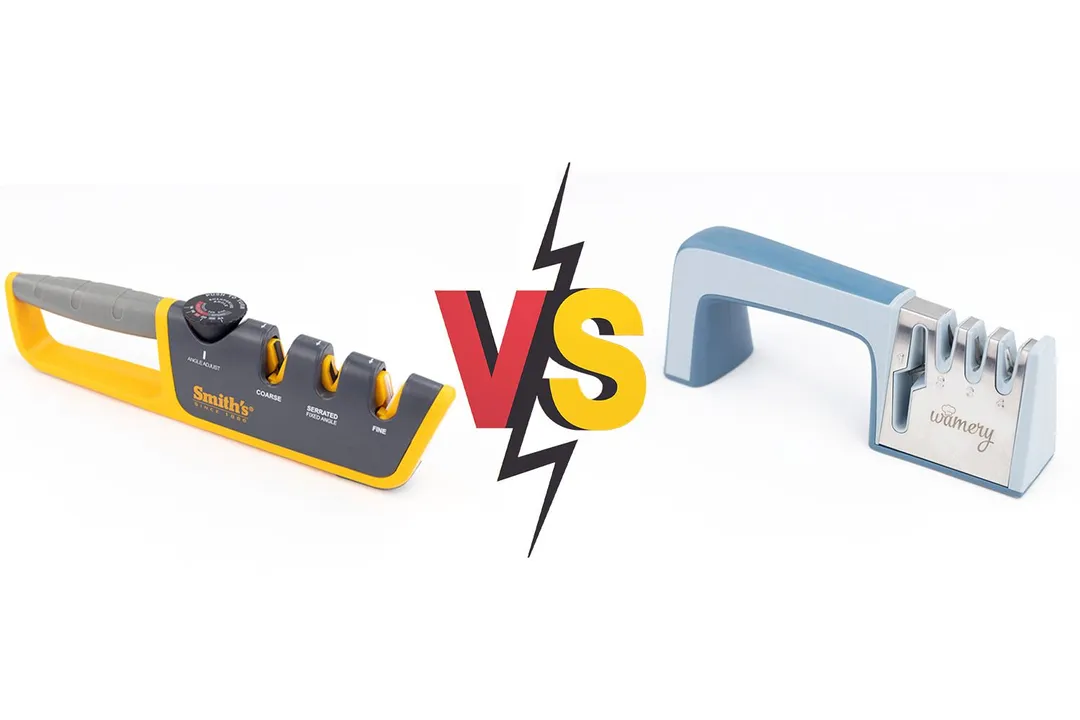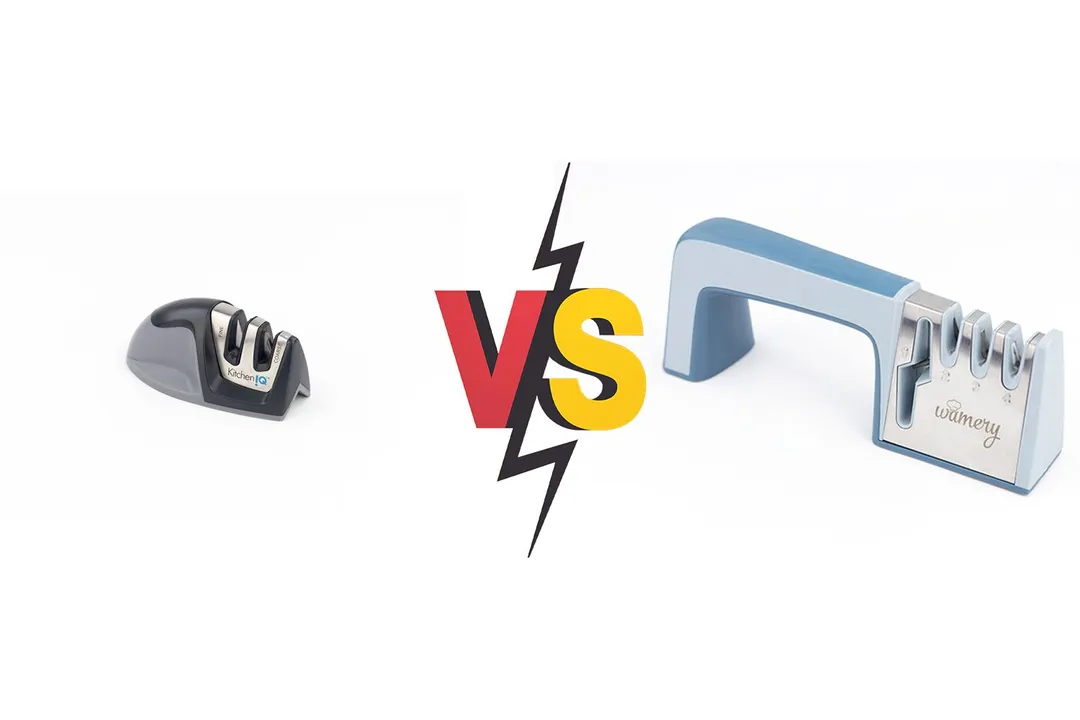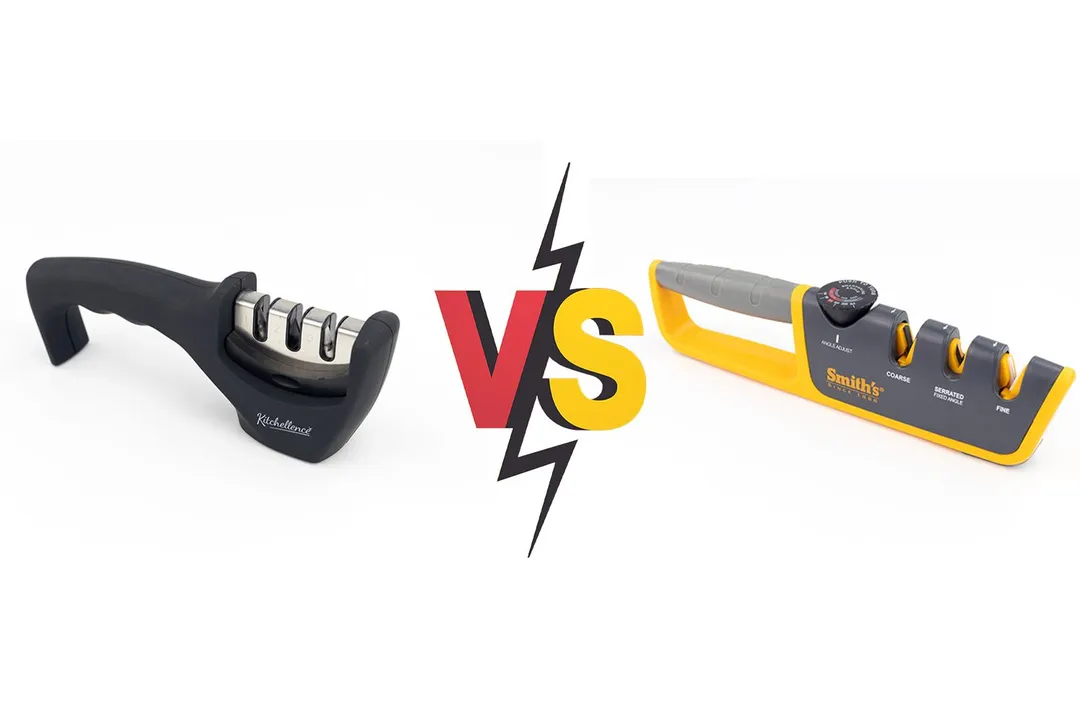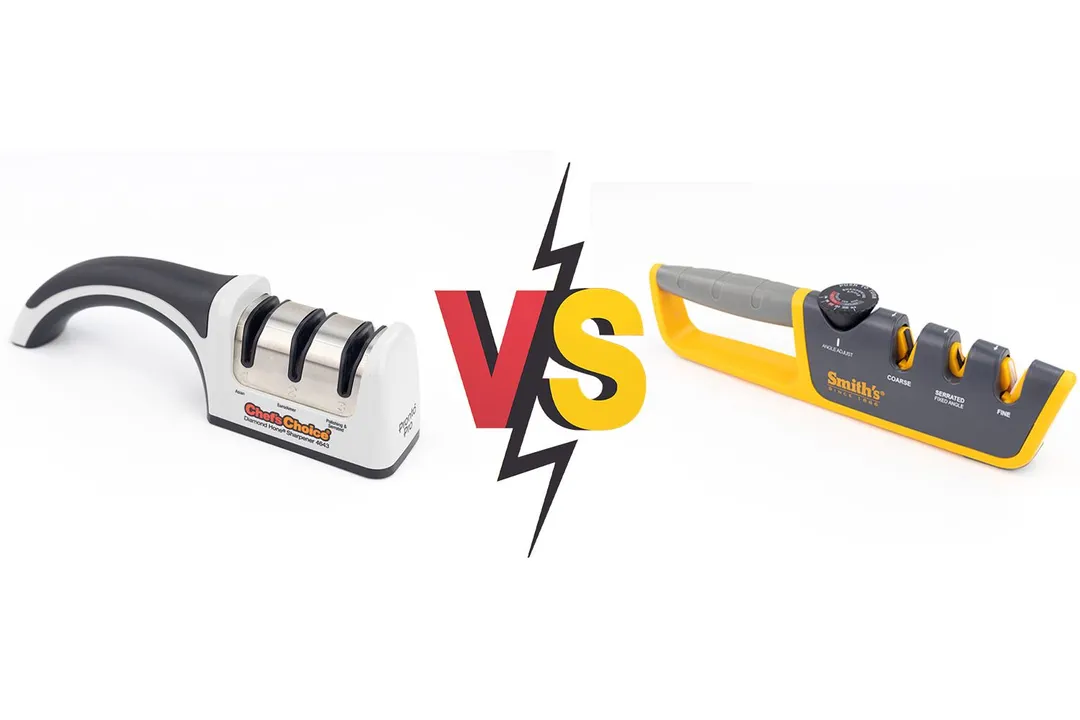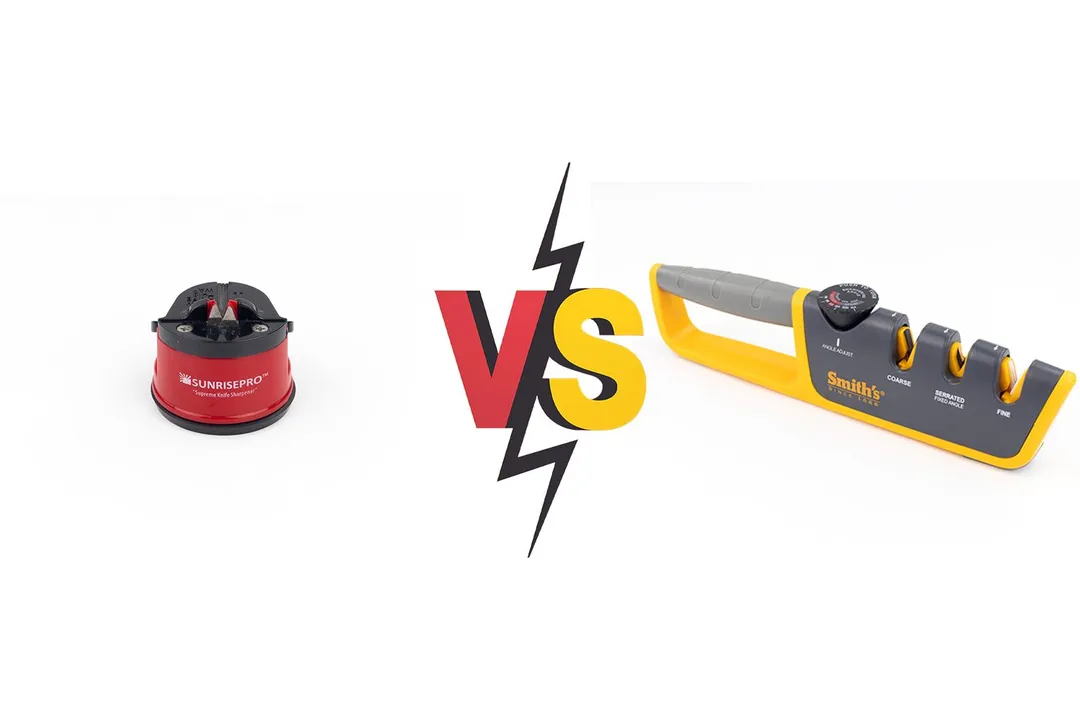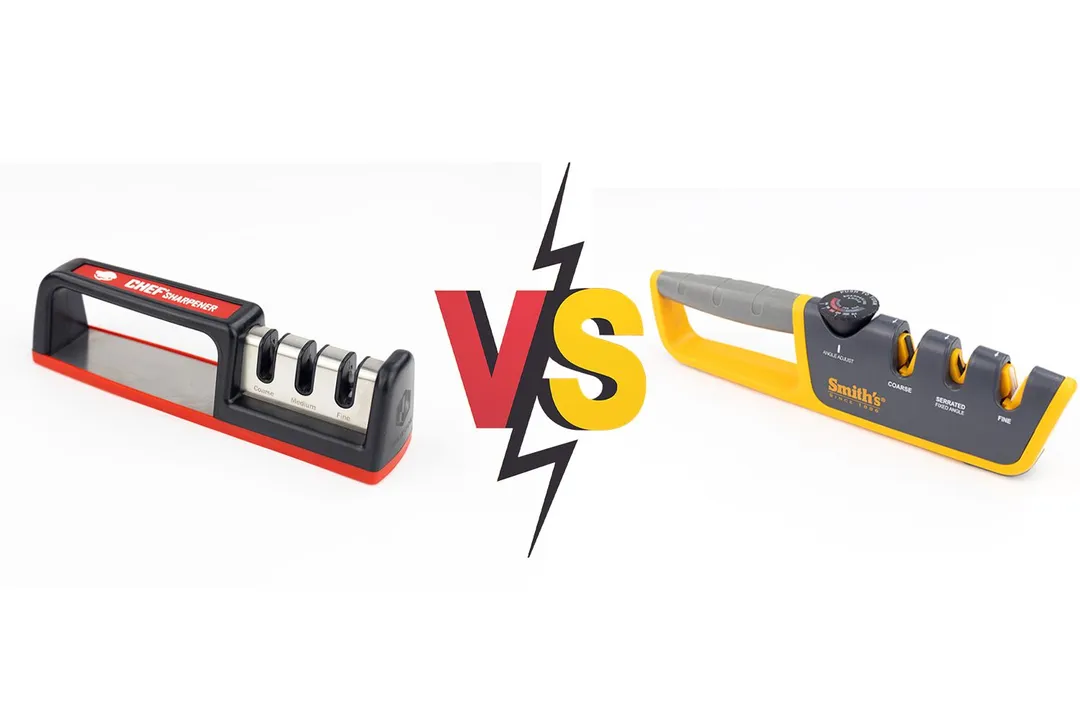Our recommendations are made independently through Research & Testing. We may receive commissions from purchases made via our links.
KitchenIQ 50009 Manual vs Smith's 50264 Manual Sharpener Side-by-Side Comparison
The KitchenIQ 50009 and the Smith's 50264 are close on our sharpener scoreboard, but the Smith’s gets the edge in performance.
KitchenIQ 50009
Tested Using Methodology v1.1Smith's Adjustable
Tested Using Methodology v1.1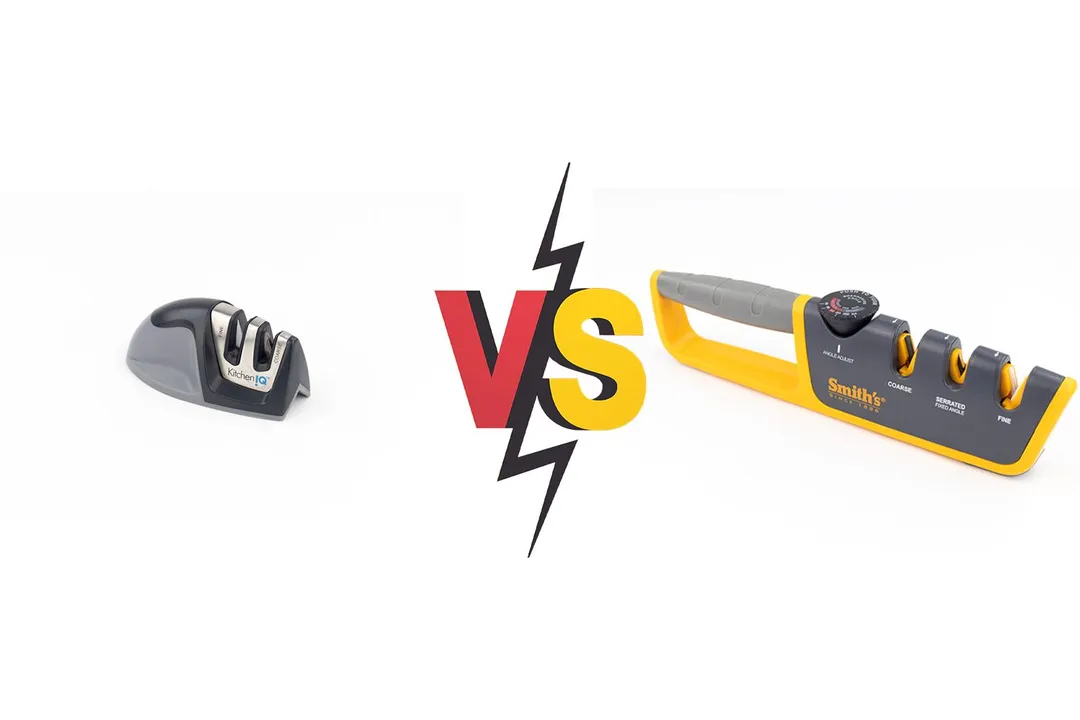
Overall Verdict
The Smith’s would be our pick over the KitchenIQ because it’s faster and more effective. Of course that’s not to say the KitchenIQ is without its own advantages.
The problem with the Smith’s is its instability in the working section, which results in a wavy knife edge. Its long thin body means you have to strain more to keep it in place, too.
The KitchenIQ, while being much smaller, feels much more solid and stable. It’s also gentler on the knife edge, though admittedly that doesn’t mean so much as it doesn’t really sharpen to the degree the Smith’s does.
Pros & Cons
- Easy storage
- Affordable price
- Base works on both counter edge and flat surfaces
- Simple, sturdy design
- Angle-adjustable sharpening
- Sharpening slot for serrated blades included
- Wide slot inserts
- Replaceable abrasives (sold separately)
- Awkward small size
- Long sharpening time
- Shears off a considerable amount of metal
- Awkward slot structure
- Long, narrow base
Key Specs
Where to Buy
*You help support HealthyKitchen101's product testing and reviews by purchasing from our retail partners.
Analysis and Test Results
Performance
Sharpening Time to Cut a Lemon
Material Retention


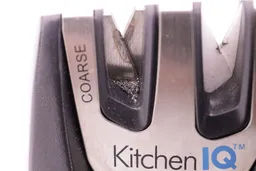
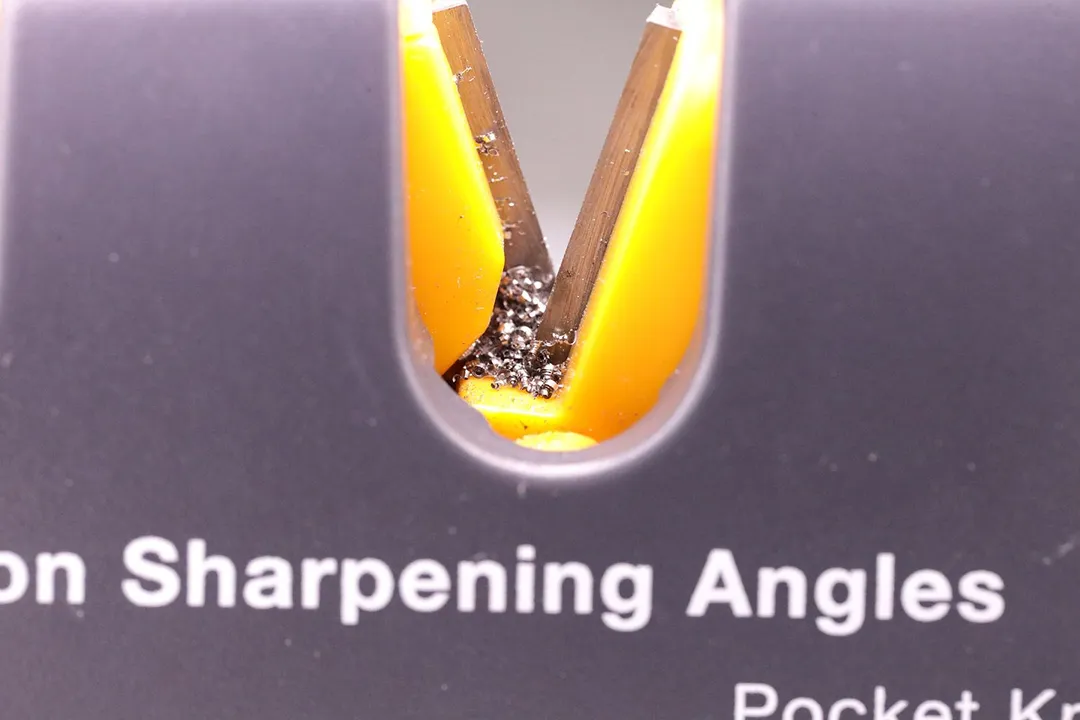

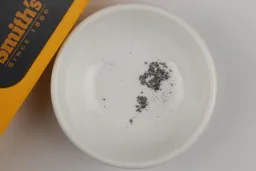
Maximum Sharpness Achieved
Edge Smoothness
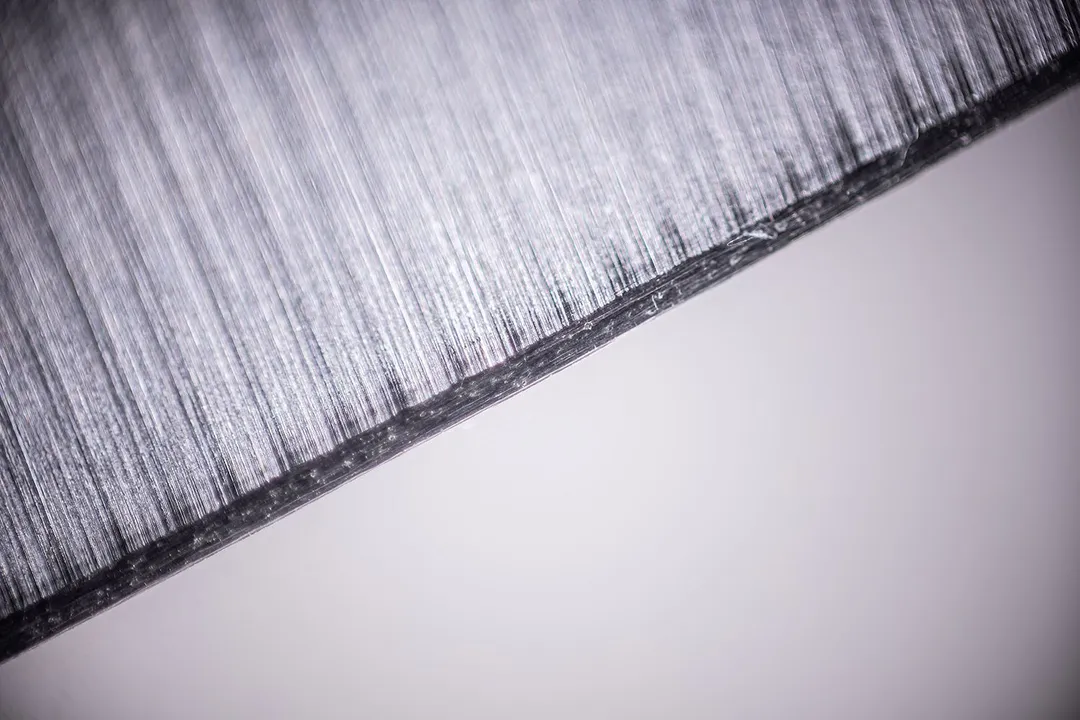

Design
In the Box
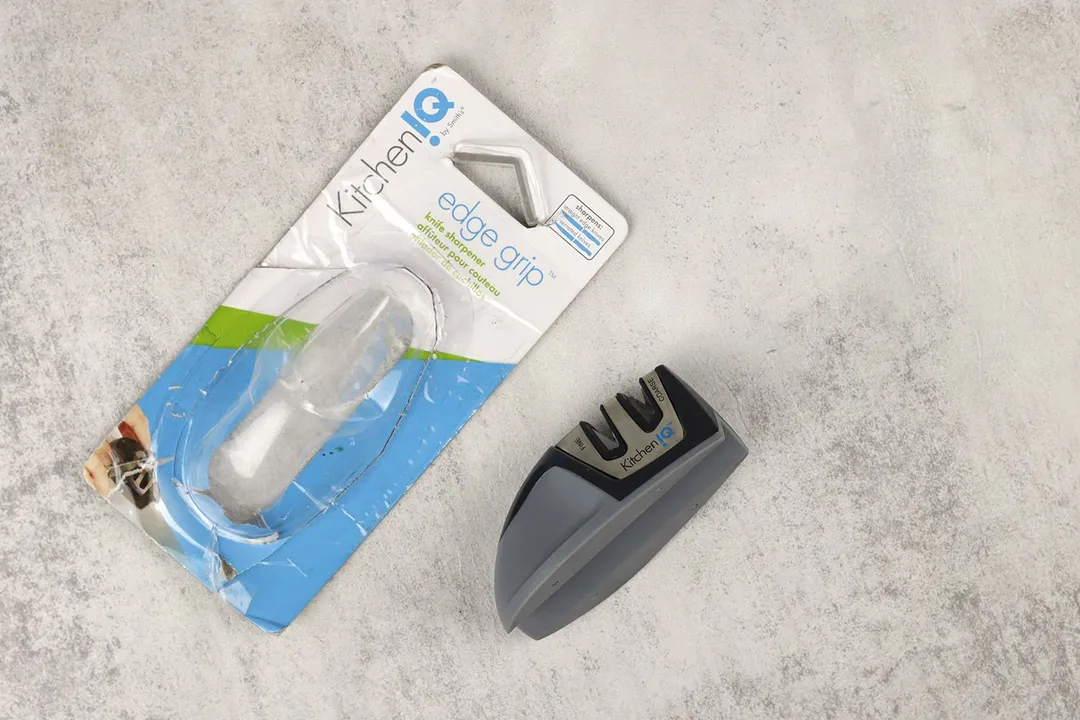
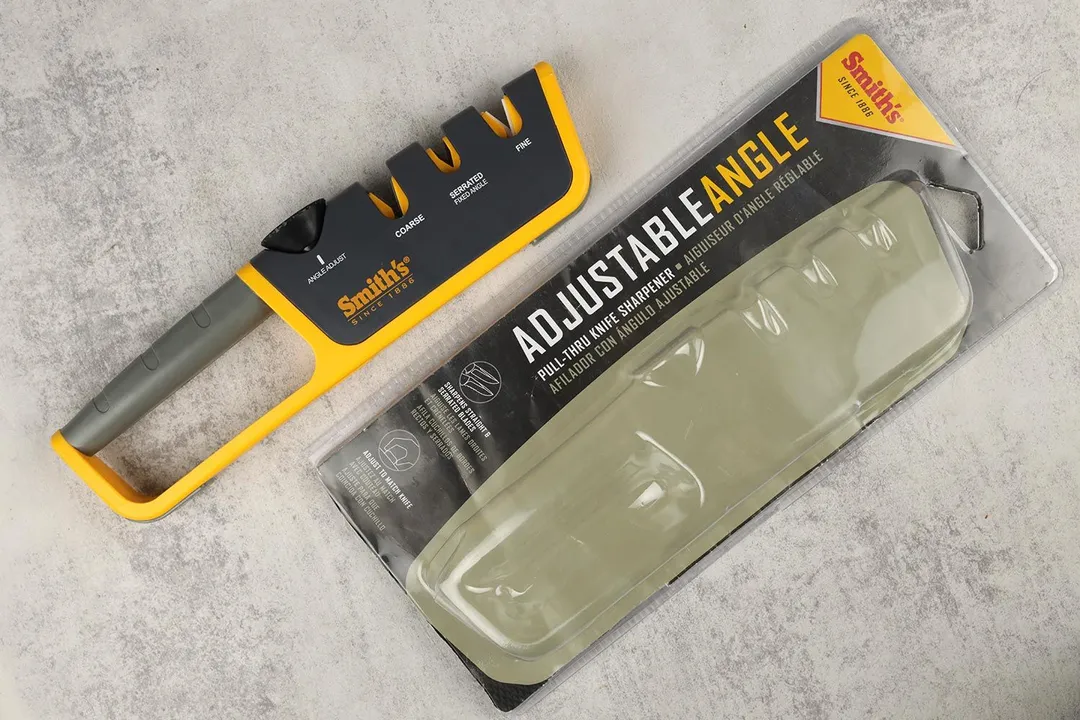
Dimensions
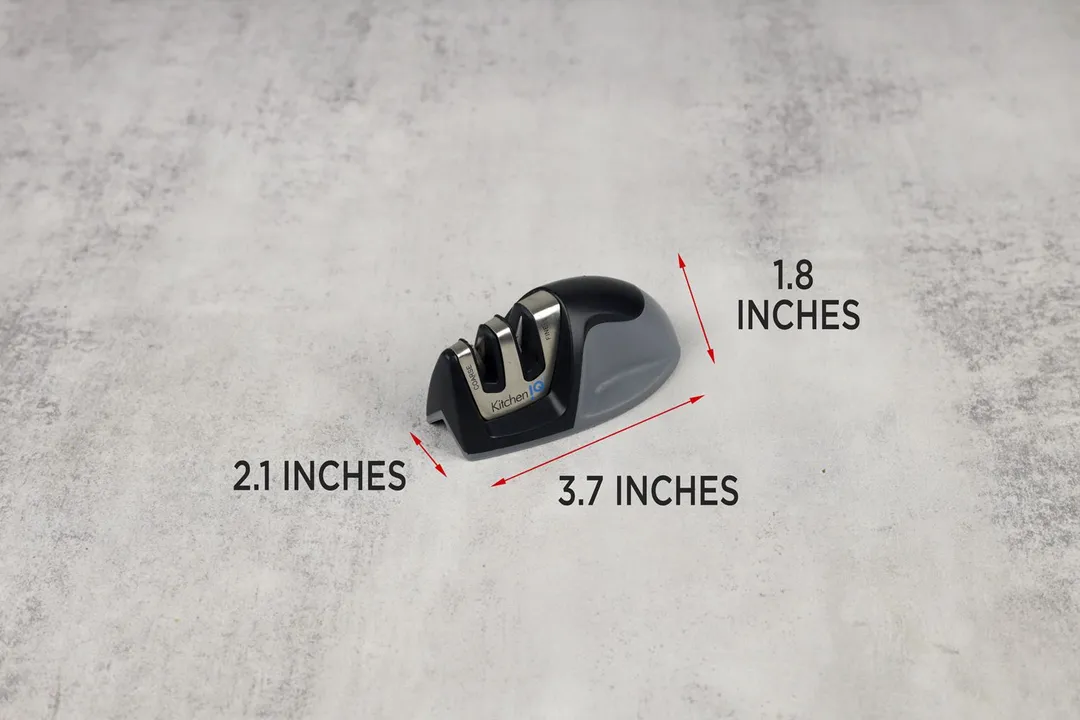
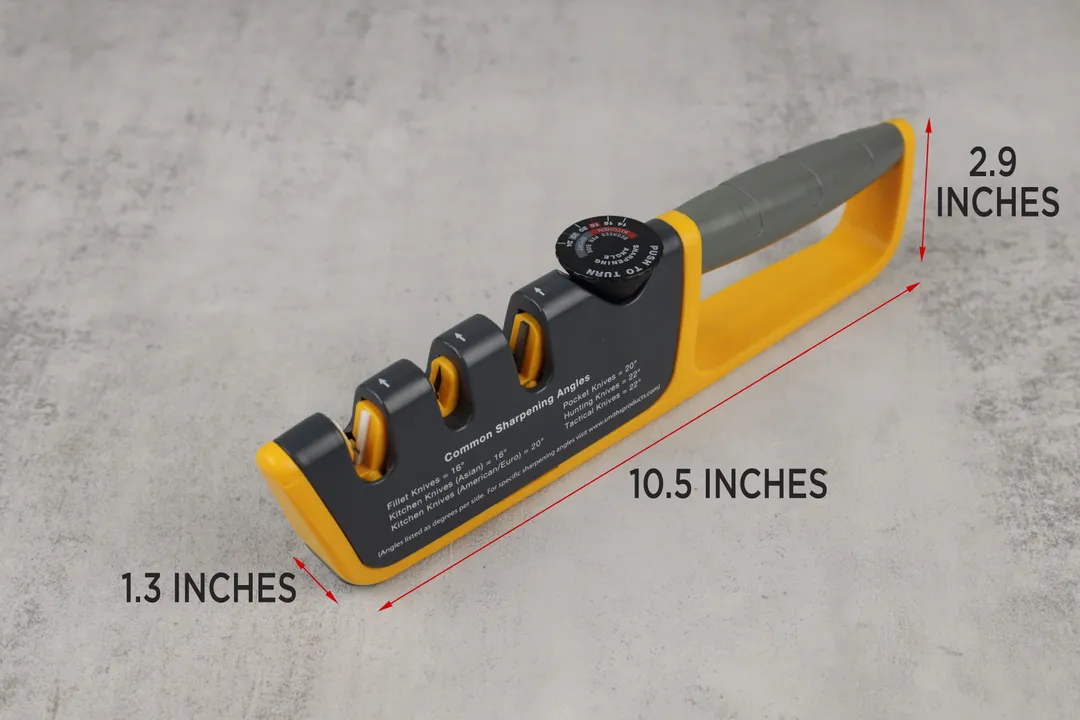
Build Quality

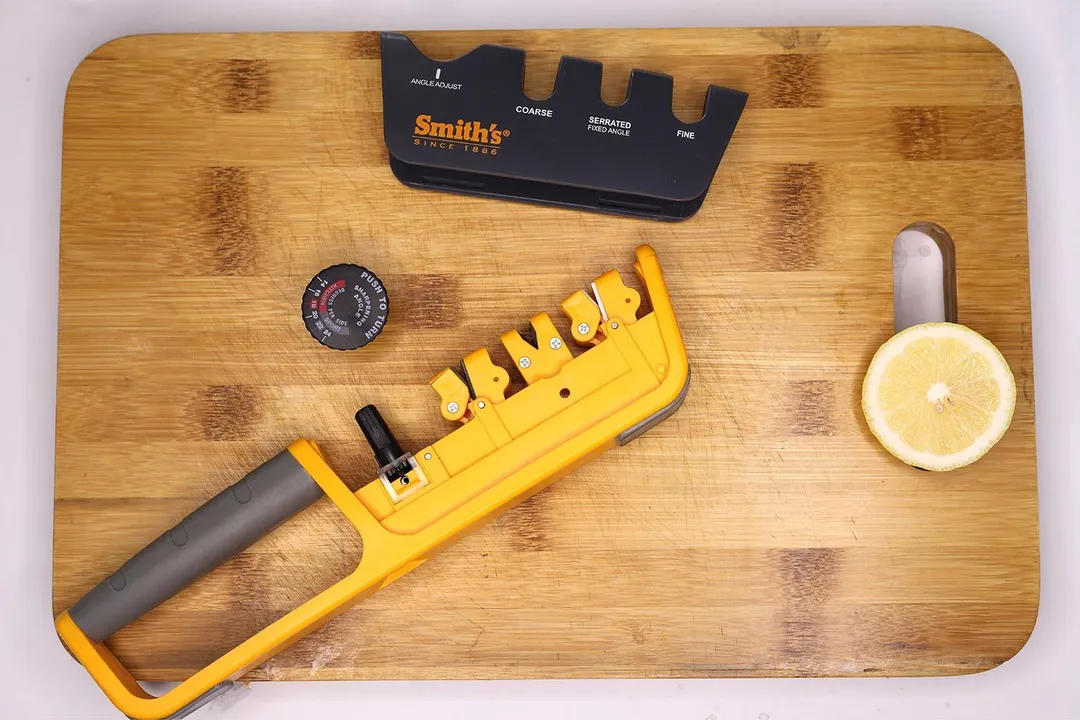
Working Section
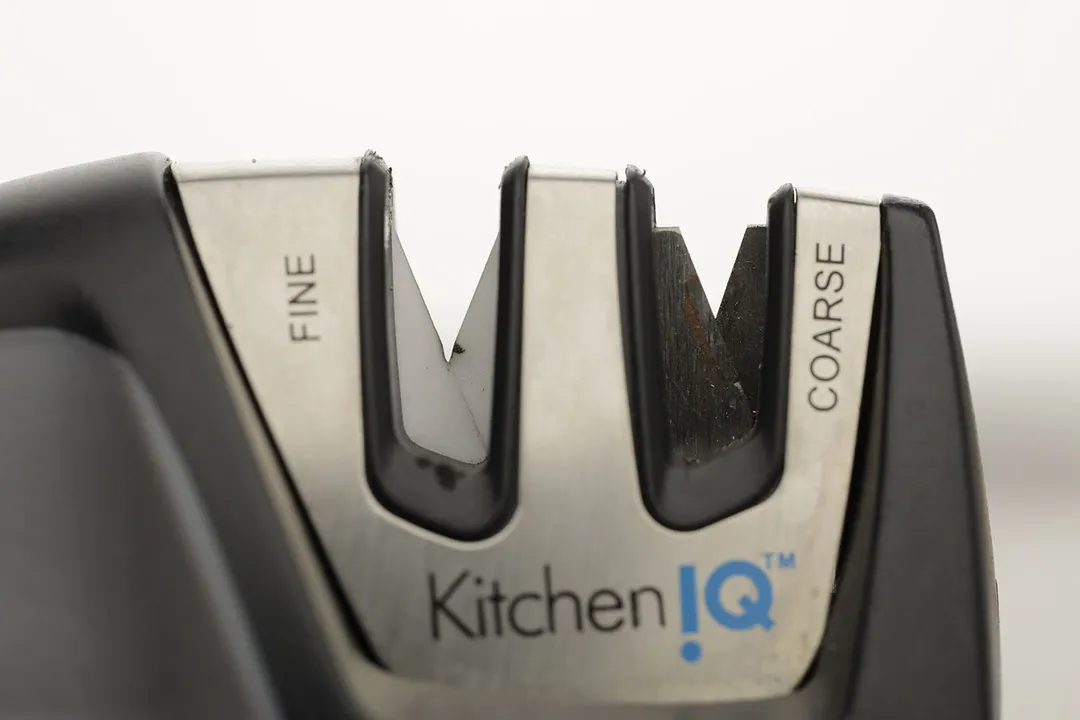
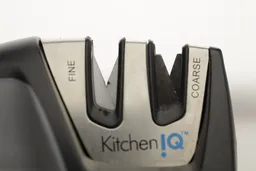

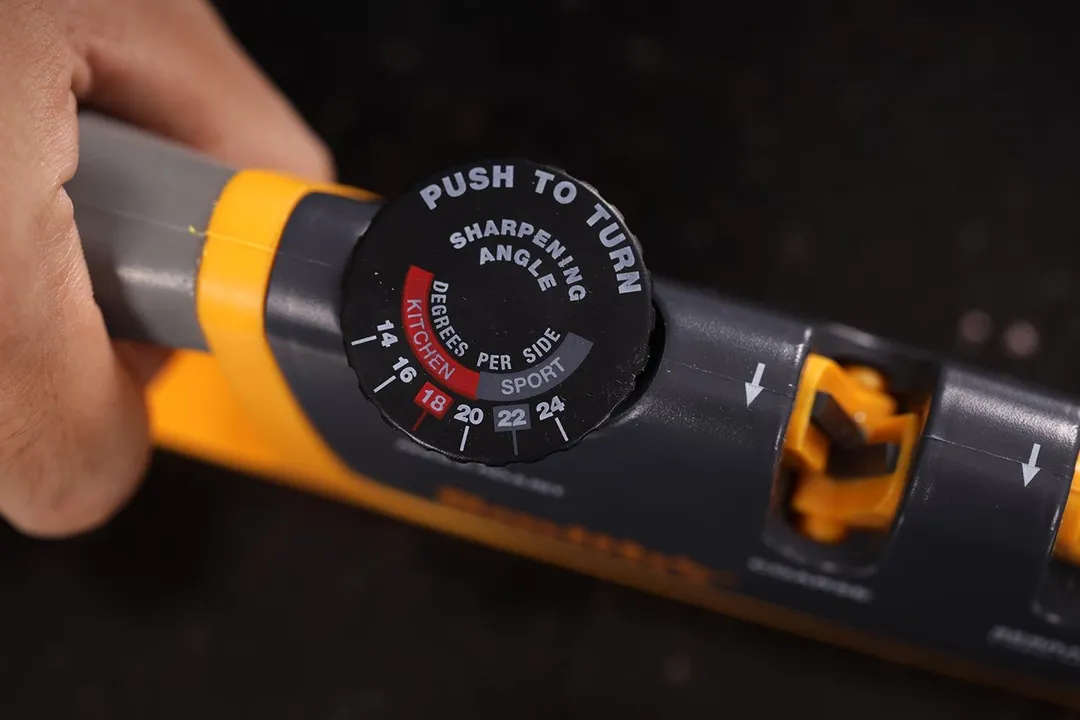
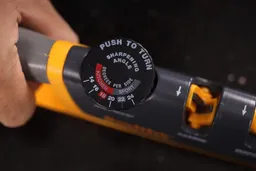

Base
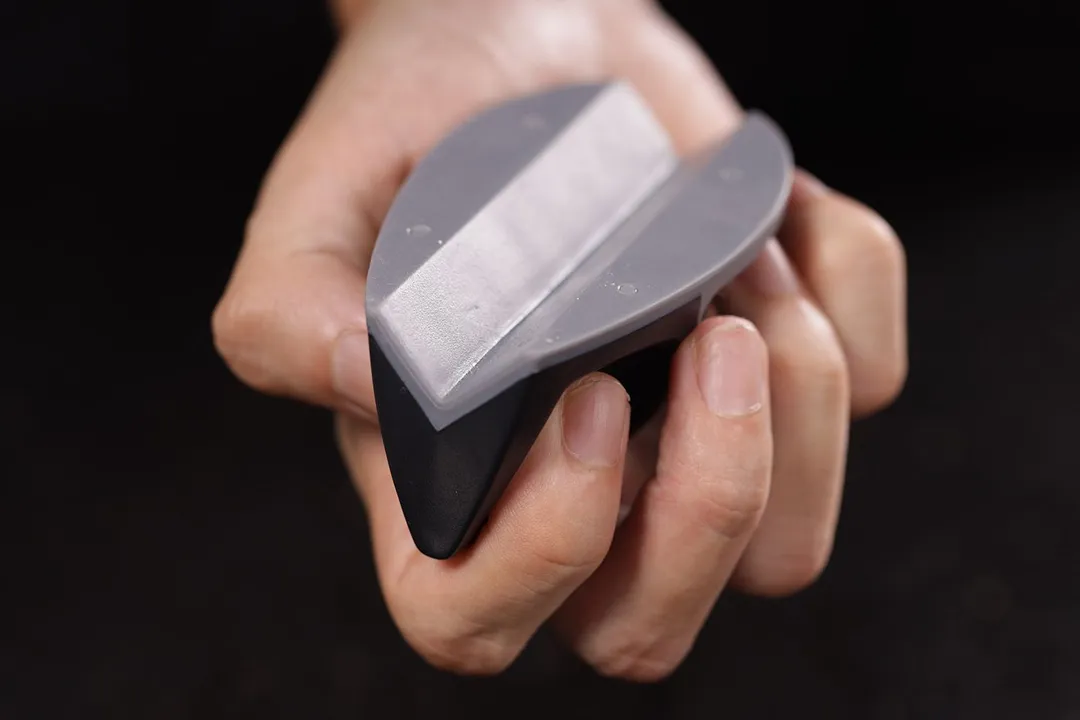
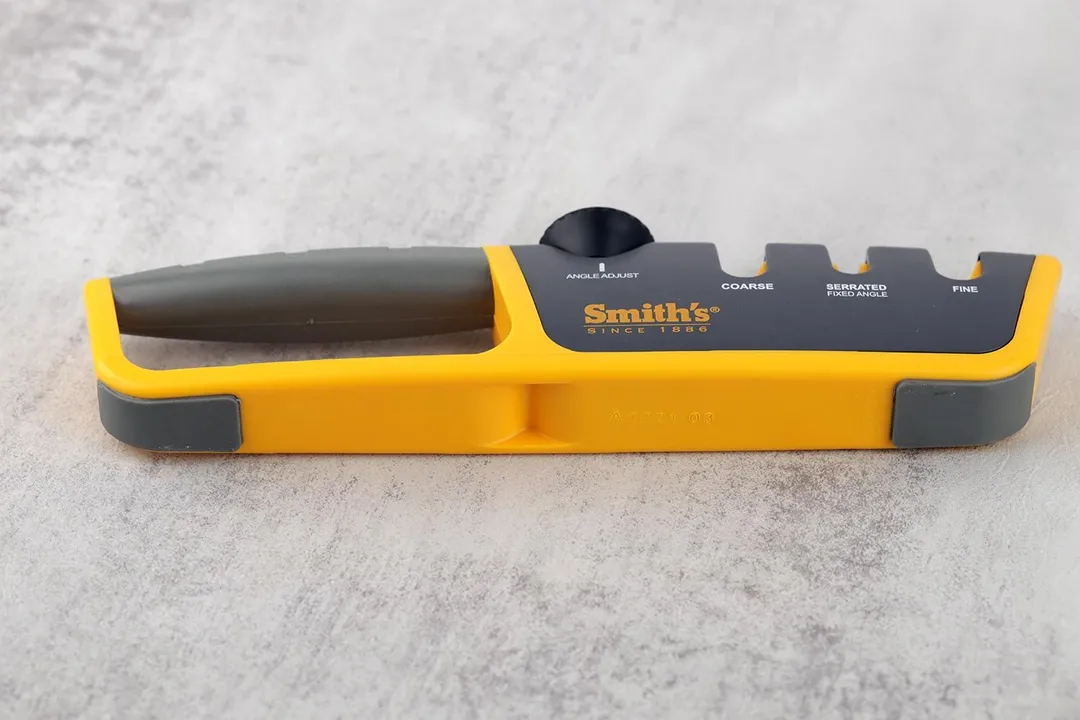
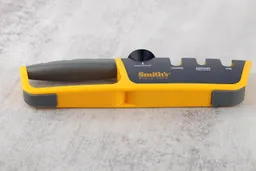

Grip
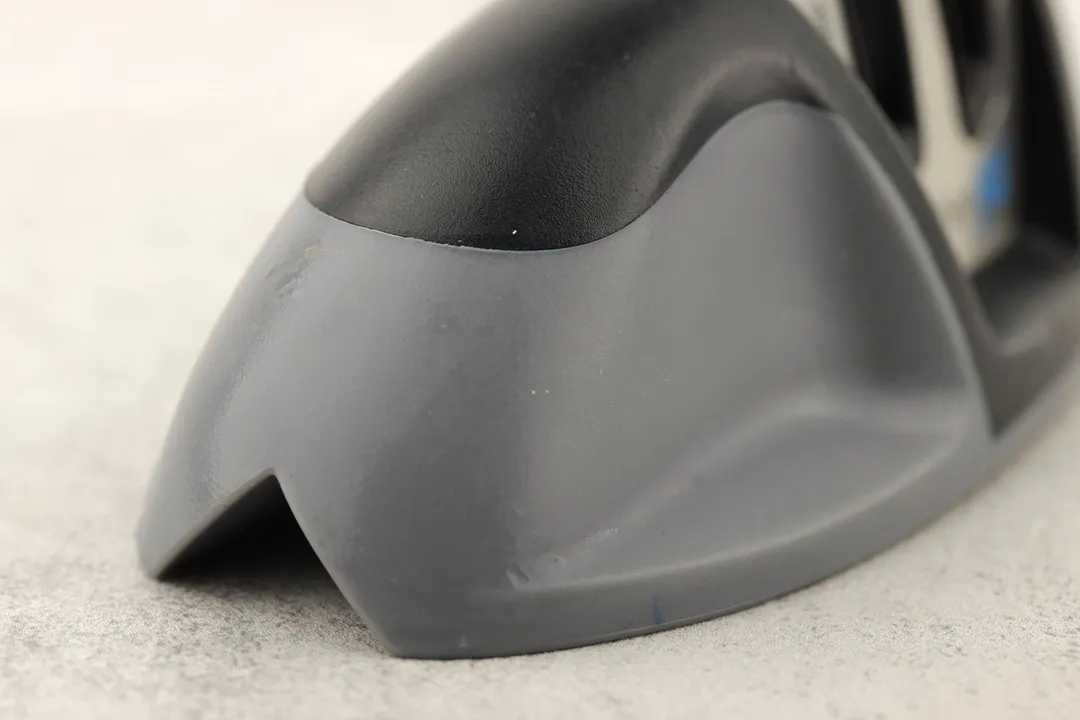
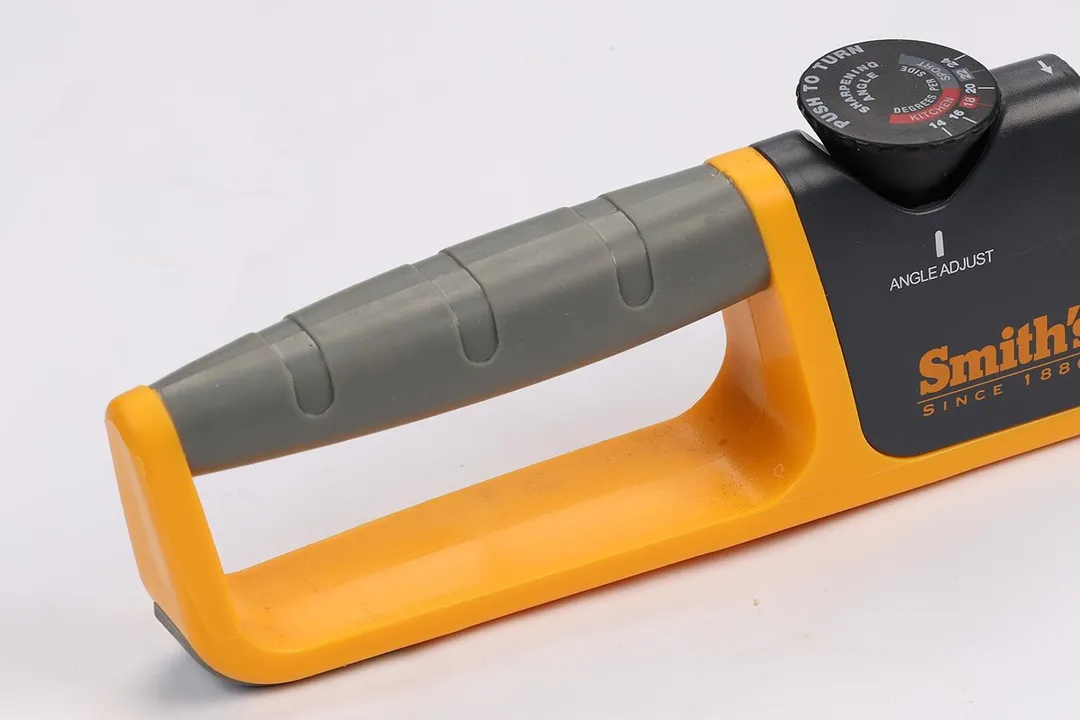
Usability
Slot Arrangement
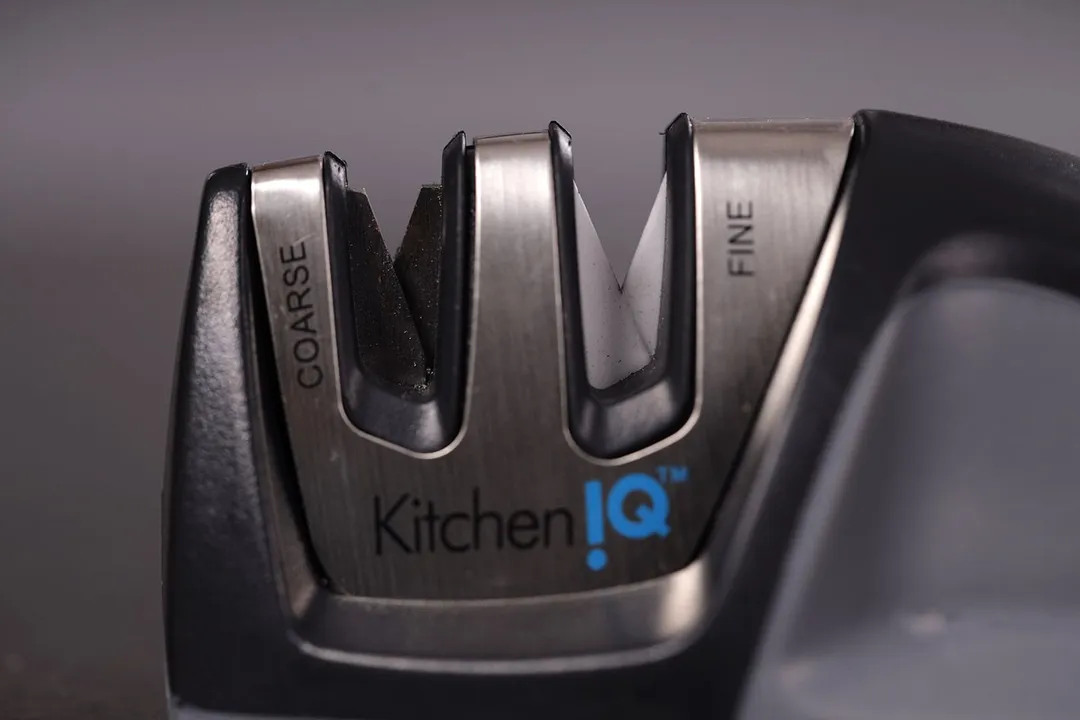
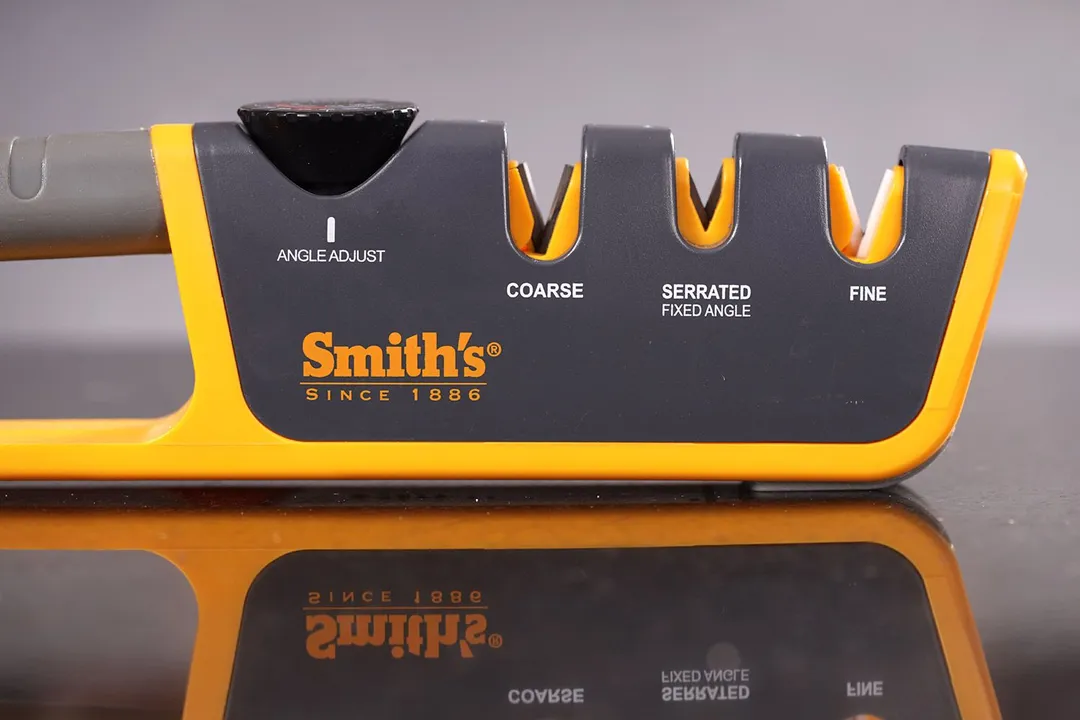
Insertion
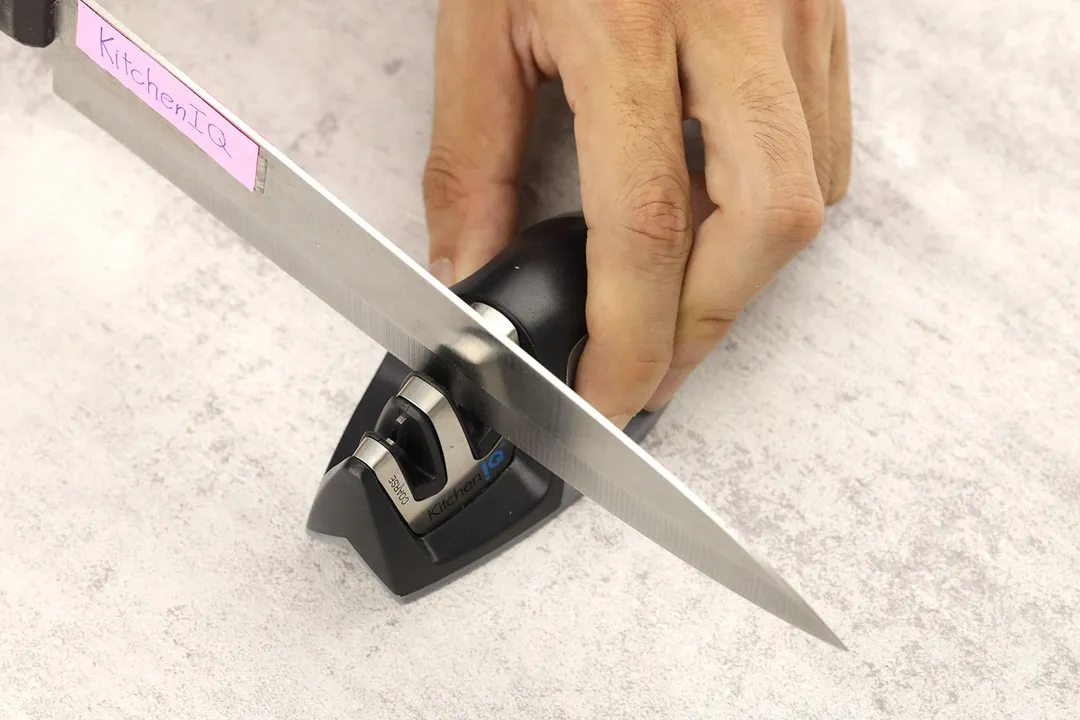
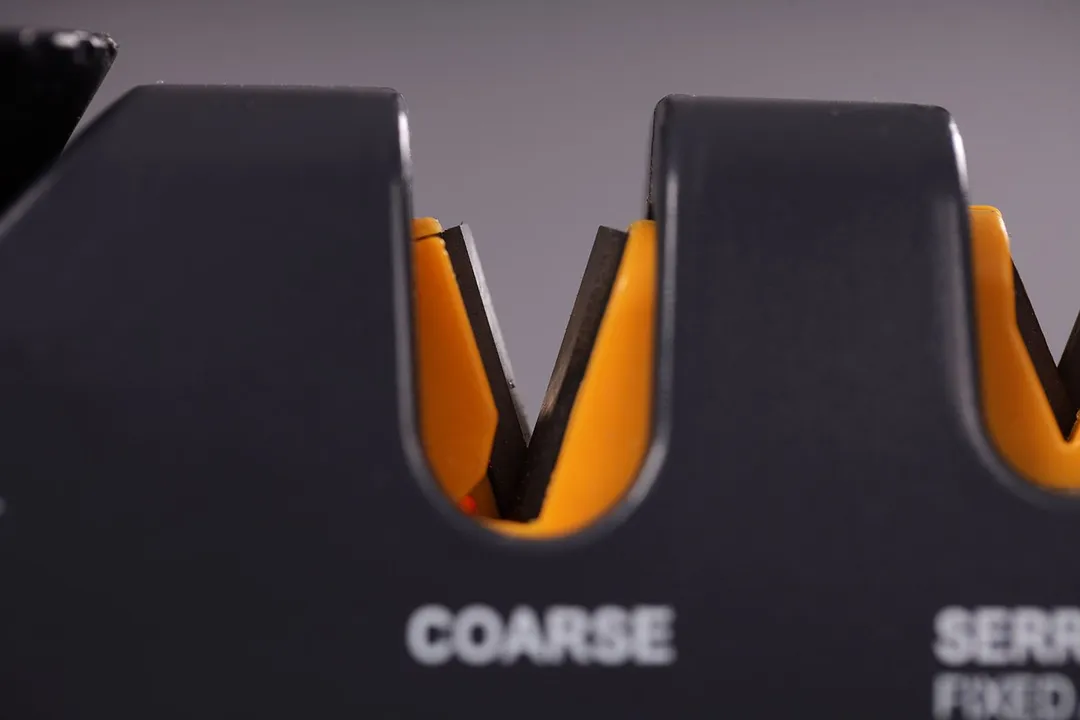
Pulling Through

Stability on a Clean Surface

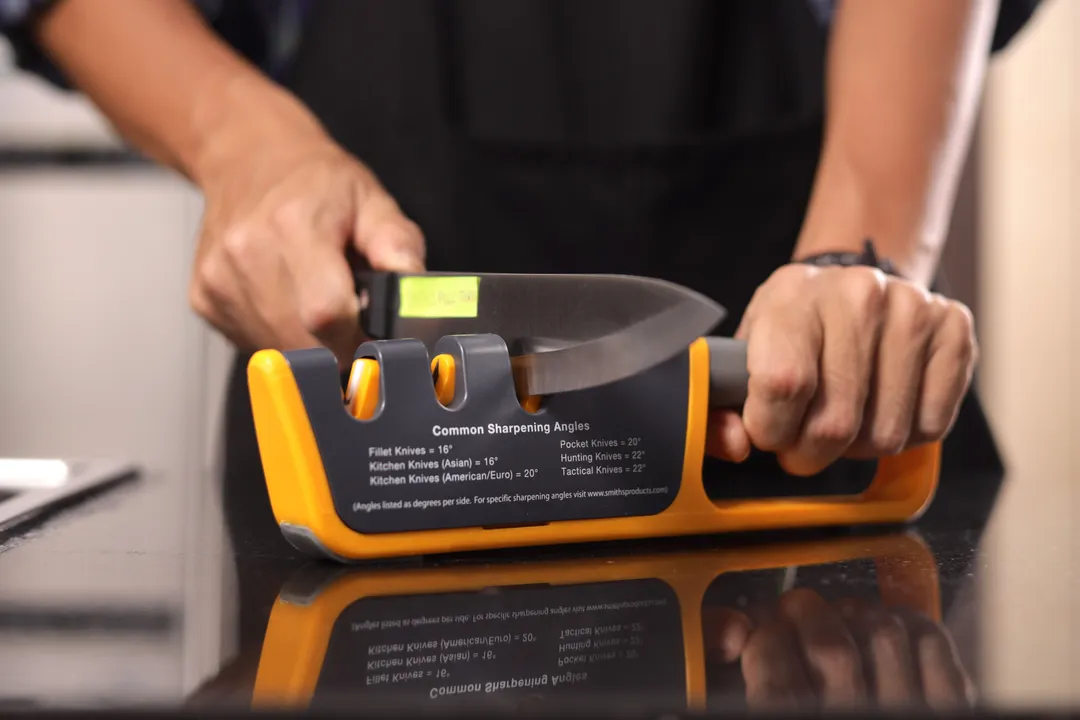
Stability on a Wet and Dirty Surface
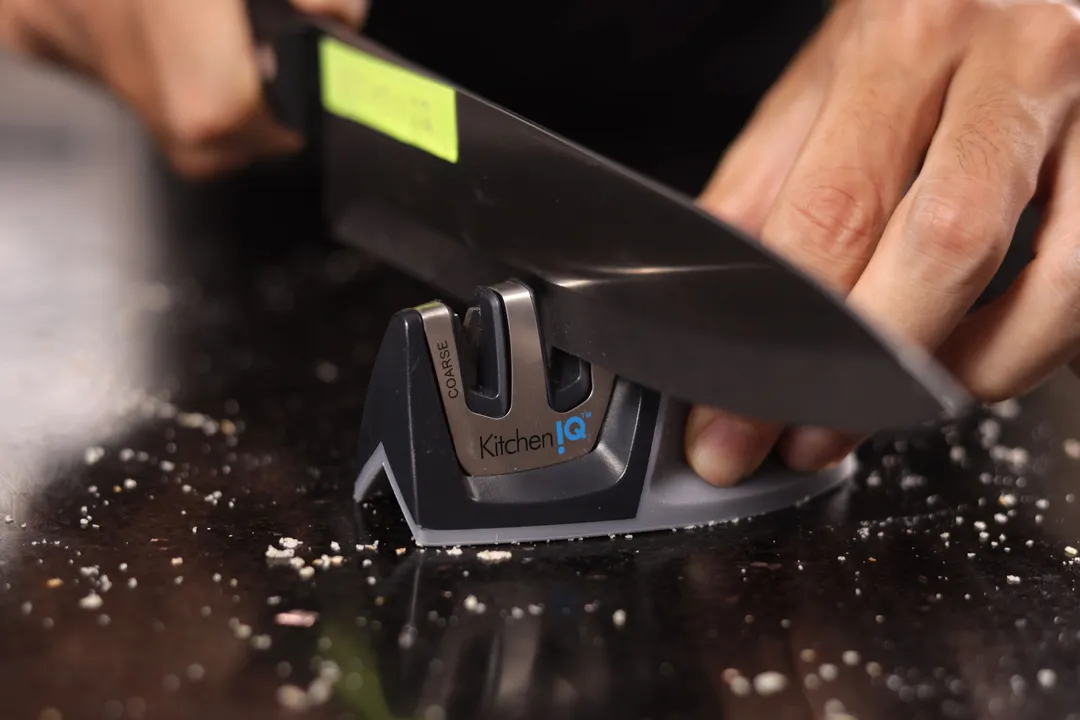
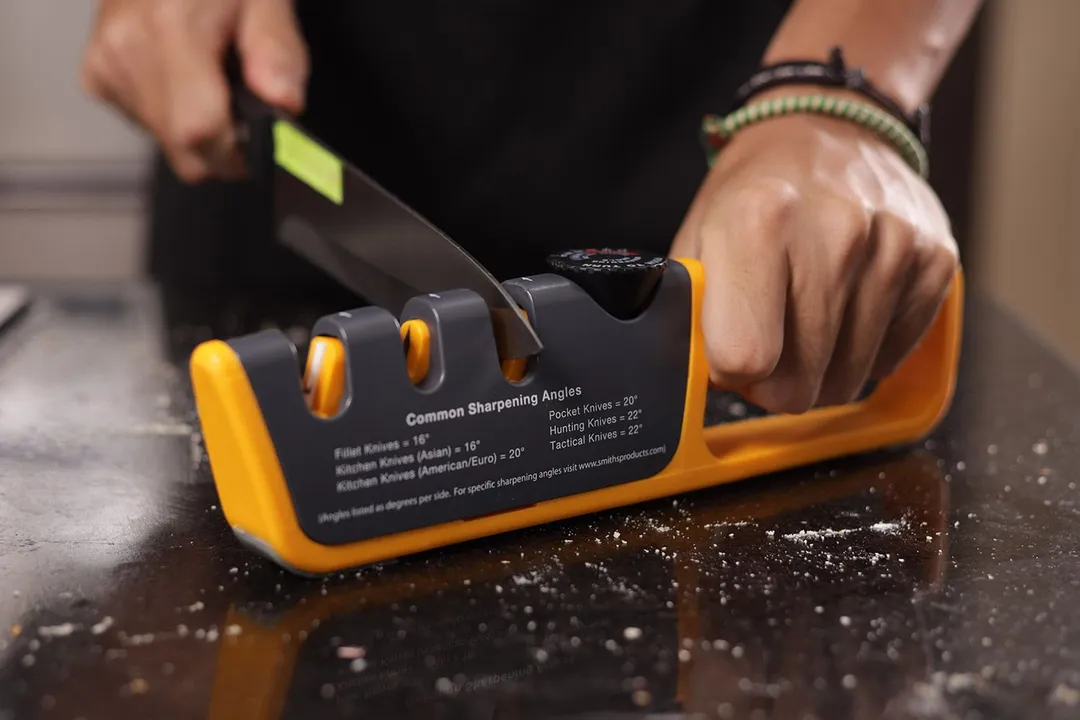
Behind the Comparison
Anh Ngo is a writer with 9 years experience at different media outlets, covering from public news and events to product testing and analysis. At HealthyKitchen101, she works across different departments, communicating closely with its network of writers, editors, and health, tech, and search engine experts to provide a meaningful and pleasant reading experience for visitors.
Lap is Head of the Research, Testing, and Review Team (RTR Team) at HealthyKitchen101.com, where he directs and supervises the testing of kitchen gadgets and appliances.
Nguyen Ntk is a graphic designer, photographer, and videographer whose philosophy centers around respecting and celebrating the beauty of reality. Through his lenses, Nguyen strives to capture the true essence of objects and events, showcasing and highlighting authentic features without distortion or exaggeration.



